Rainforests are hugely important to the health of the planet, sucking huge amounts of carbon dioxide out of the Earth's atmosphere and replacing it with oxygen. They are characterised by a dense and continuous tree canopy and high annual rainfall (hence their name).
There are several different types of rainforest including tropical, dry and temperate. Tropical rainforests are found near the Earth's equator and have a warm and wet climate. Temperate rainforests tend to have more distinct seasonal changes in weather and are more evenly distributed in the northern and southern hemispheres. A dry rainforest is one with lower overall rainfall and more distinct seasons.
Rainforests are home to many unique species of plants and animals. It is estimated that over half of the world's species of flora and fauna can be found in rainforests around the world.
To get a true picture of a rainforest and the threats they face, take a look at some of the largest in the world by land area. Here are the top 10 biggest on the planet.
10. Westland temperate forests – 11,880km2
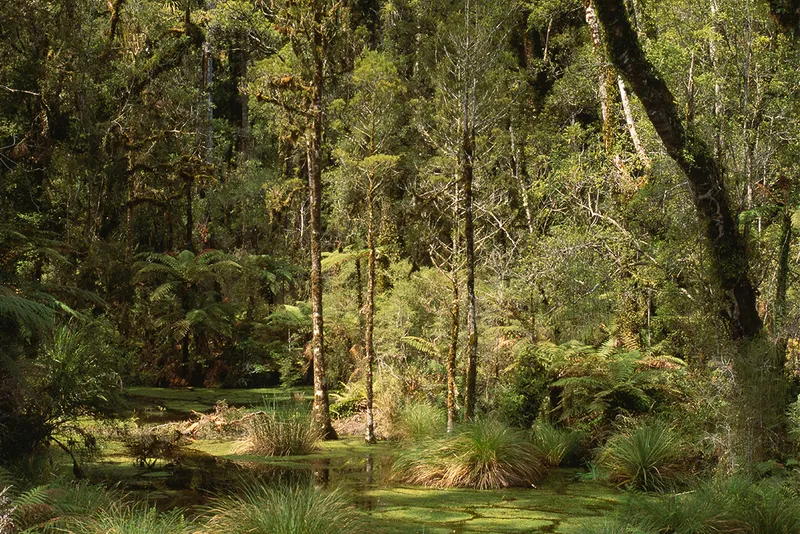
The Westland temperate forests are located on the west coast of South Island in New Zealand. Because it is bordered by the Southern Alps and the Tasman Sea, this forest sees some pretty high average rainfall of around 3,000mm per year.
This area is home to a wide variety of birds such as the kea and kaka parrot, as well as many endangered species like the Okarito brown kiwi.
Nearly half of the land is protected, but climate change has brought an increased threat to the future of the forest due to the growing risk of wildfires due to drought.
9. Bosawás Biosphere Reserve – 20,000km2
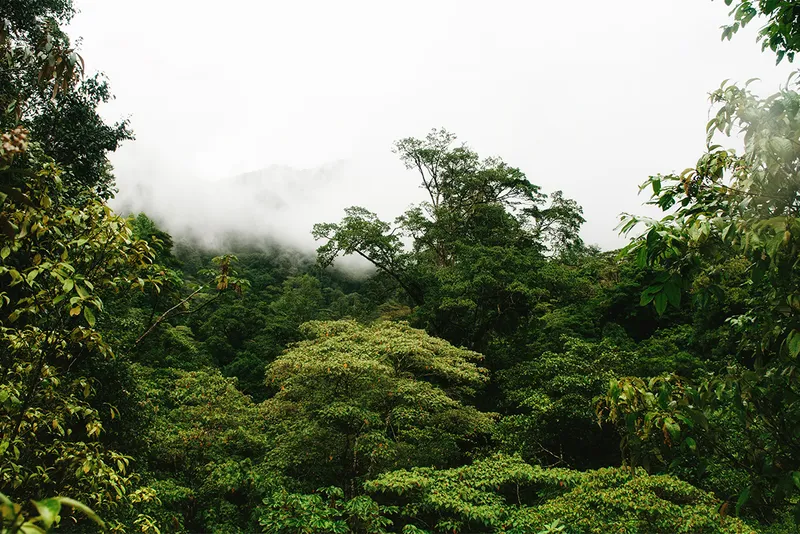
The Bosawás Biosphere Reserve makes up approximately 15 per cent of Nicaragua's total land area and is the second-largest rainforest in the Western Hemisphere.
It is home to a huge amount of biodiversity, with over 13 per cent of the world's animal and plant species estimated to be present within the reserve. Animals such as the harpy eagle, Saslaya moss salamander and large cats like jaguars and pumas can also be found within the reserve.
Thanks to conservation efforts by the indigenous people who live there, the health of this rainforest is thought to be excellent.
8. Tropical Rainforest Heritage of Sumatra – 25,000km2

The Tropical Rainforest Heritage of Sumatra (or TRHS for short) is made up of three national parks on the island of Sumatra, Indonesia. This forest incorporates a huge amount of biodiversity, including an estimated 10,000 different species of plants and 500 species of birds. The Sumatran orangutan and Sumatran tiger are also examples of endemic species that can be found here.
It is also home to Indonesia's largest volcano, Gunung Kerinci, which stands 3,805m above sea level. In fact, most of the TRHS is located on the mountain spine of Sumatra, the sixth-largest island on Earth.
However, there are threats to the future of the TRHS, mainly in the form of illegal logging, road building and agricultural encroachment.
7. Pacific temperate rainforests – 60,346km2
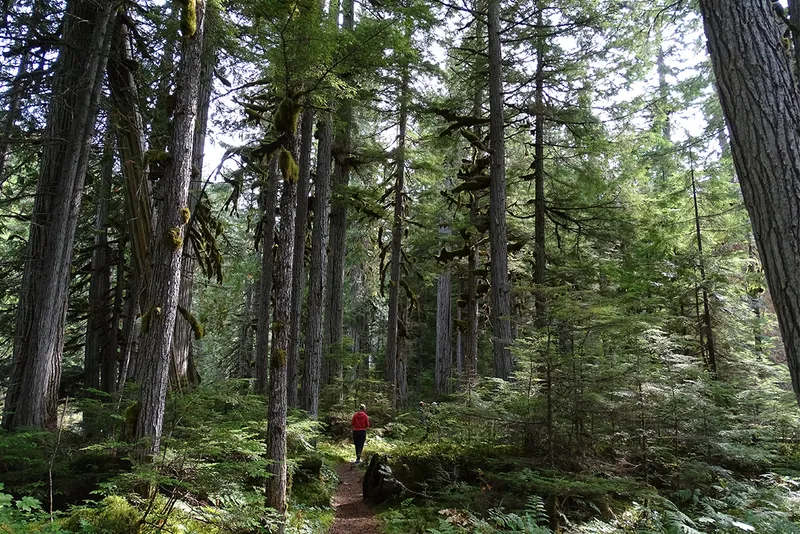
The Pacific temperate rainforests hug the Pacific coastline of the USA and Canada from California USA through to Alaska. This rainforest is home to a broad range of trees, including some of the tallest trees found on Earth, like the coast redwood and the coast Douglas-fir.
There are many common species of animals found here, including raccoons, coyotes, bullfrogs, red foxes and opossums.
Because of its climate, this rainforest is not at risk from wildfires and is more likely to be damaged by wind or avalanches. But it does also face the threat of logging thanks to a lack of legal protection, meaning that huge areas of forest have been lost in the last century.
6. Eastern Australian temperate forests – 222,100km2

The Eastern Australian temperate forests encompass a vast area of the country, stretching from the east coast of New South Wales to southern Queensland. It is mainly comprised of dense areas of open eucalyptus forests, as well as denser subtropical rainforests, thickets and shrubland.
Here, the weather in the coastal regions is far more humid than the drier inland areas, with about half the annual rainfall.
The wildlife of the Eastern Australian temperate forests is diverse, with animals such as Koalas, velvet worms, kookaburras and swift parrots all calling this place home.
undefined5. Valdivian temperate forests – 248,100km2
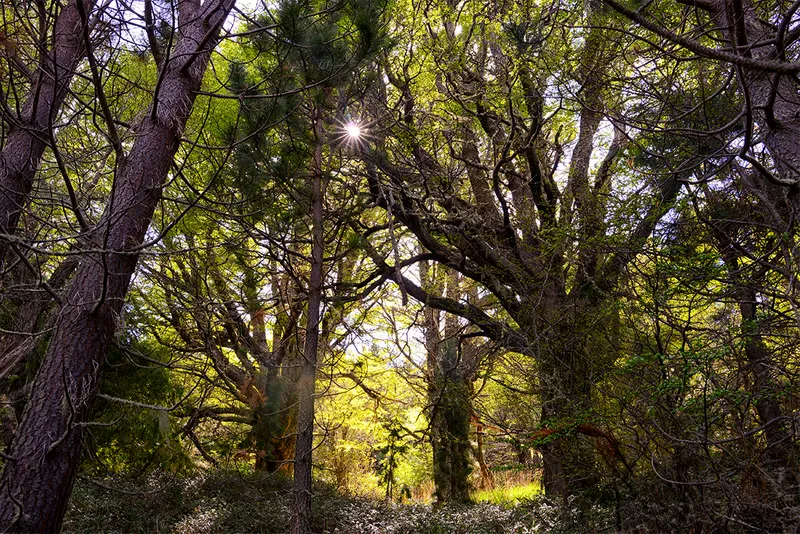
The Valdivian temperate forests are located on the west coast of South America, sandwiched between the Pacific and the Andes mountains and 40 degrees south of the equator. Because of this location, the difference in rainfall between areas in the north and south is vast, with the south receiving 6,000mm of precipitation a year on average. By comparison, the north only receives 1,000mm.
This is the only temperate rainforest in South America and has a number of species endemic to this region. These include the Kodkod, the rufous-legged owl, and the world's smallest deer, the pudu.
The main threat to the health of the rainforest here is the logging industry, with the huge native trees replaced with quicker-growing pine trees, which are then cut down and used to make paper.
4. Borneo Lowland Rainforest – 428,438km2
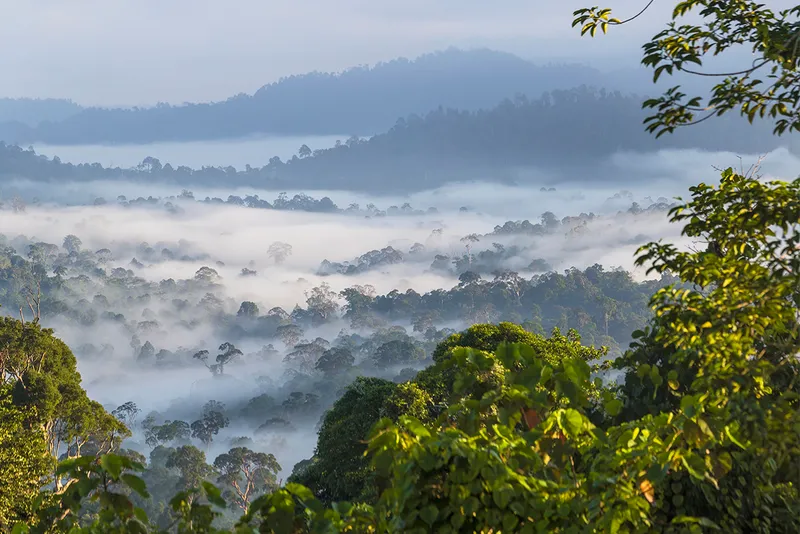
Borneo is the third-largest island in the world, and its rainforest covers well over half of this area. Split between three countries (Brunei, Indonesia and Malaysia), this rainforest is one of the most places on the planet. Its climate is tropical, with a temperature that only fluctuates by 10°C during the whole year.
The Borneo Lowland rainforest is home to well over 10,000 species of plants, including over 2,000 types of orchids. It is also teeming with a wide range of animal life, including Asian elephants, crocodiles, hornbills, and the adorable slow loris.
The rainforest faces huge threats due to continued deforestation and conversion of large areas to agricultural land that is used to grow oil palm.
3. New Guinea Rainforest – 786,000km2

The New Guinea Rainforest must have one of the most erratic weather systems on Earth, except perhaps a British summer. Here, you can be battered by monsoon rains, build a snowman or be hit by an intense heatwave.
New Guinea is the second-largest island in the world, and the rainforest here comprises 65 per cent of the land on the island. The diversity of plant and animal life is incredible, and just as diverse as nearby Australia, despite being one-tenth of the size. Creatures like the long-beak echidna, the tree kangaroo and the flying fox all call this amazing place home.
It is also the habitat of the world's largest butterfly, the Queen Alexandra birdwing butterfly. This amazing butterfly can have a wingspan of up to 250mm.
2. Congo Basin – 1.6 million km2
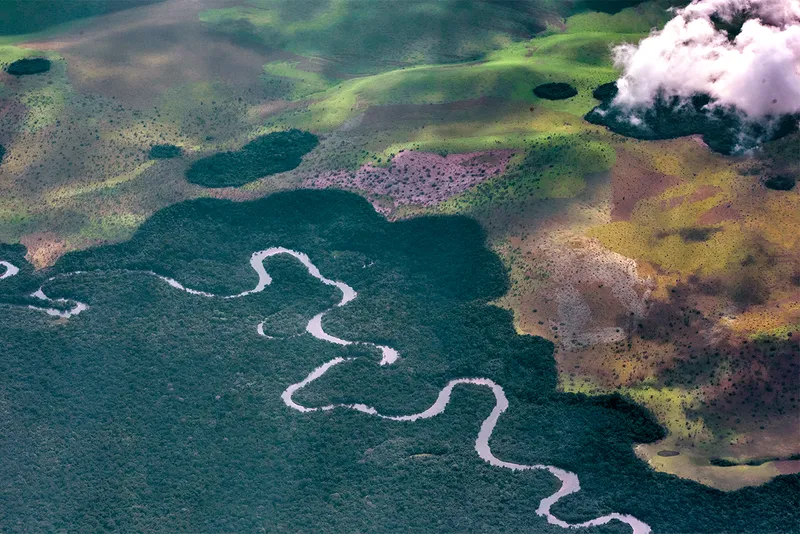
The Congo Basin is so huge that it is known as the 'Lungs of Africa', and is split over nine countries in the centre of the continent.
The basin has two main rainy seasons, and this rainfall helps to support the ecosystem. Due to its size, this rainforest is vitally important in mitigating the effects of climate change by removing and storing carbon within its soil (known as a carbon sink). It is estimated that the Congo Basin hold around 8 per cent of the world's forest-based carbon.
Animals found within the basin include chimpanzees, bonobos, Okapi, leopards and the western lowland gorilla. It is also the place with the most lightning storms anywhere in the world.
Deforestation due to the logging industry threatens the whole basin, and vast quantities of carbon could be released into the atmosphere if more areas of rainforest are felled.
1. Amazon Rainforest – 6.7 million km2
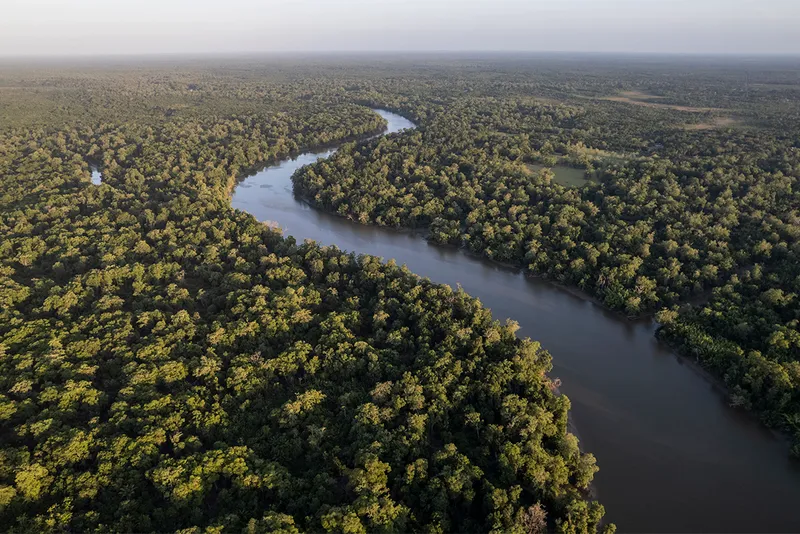
The Amazon Rainforest is the largest forest in the world, with an area of 6.7 million km2 and spanning eight countries. On its own makes up half of the planet's rainforest area and is a crucial part of the Earth's climate.
One-tenth of all known species of plants and animals on the planet are found here, including many that aren't found anywhere else, such as the golden lion tamarin and the glass frog.
Over the last 40 years, deforestation due to the expansion of agricultural land has seen a 17 per cent decrease in the size of the Amazon Rainforest. Due to the amount of carbon that is stored here, the loss of this rainforest would be catastrophic to the atmosphere.
| Rainforest | Size KM2 |
| Westland temperate forests | 11,880 |
| Bosawas Biosphere Reserve | 20,000 |
| Tropical Rainforest Heritage of Sumatra | 25,000 |
| Pacific temperate forests | 60,346 |
| Eastern Australian temperate forests | 222,100 |
| Valdivian Temperate Forests | 248,100 |
| Borneo Lowland Rainforest | 428,438 |
| New Guinea Rainforest | 786,000 |
| Congo Basin | 1.6 million |
| Amazon Rainforest | 6.7 million |
Read more: